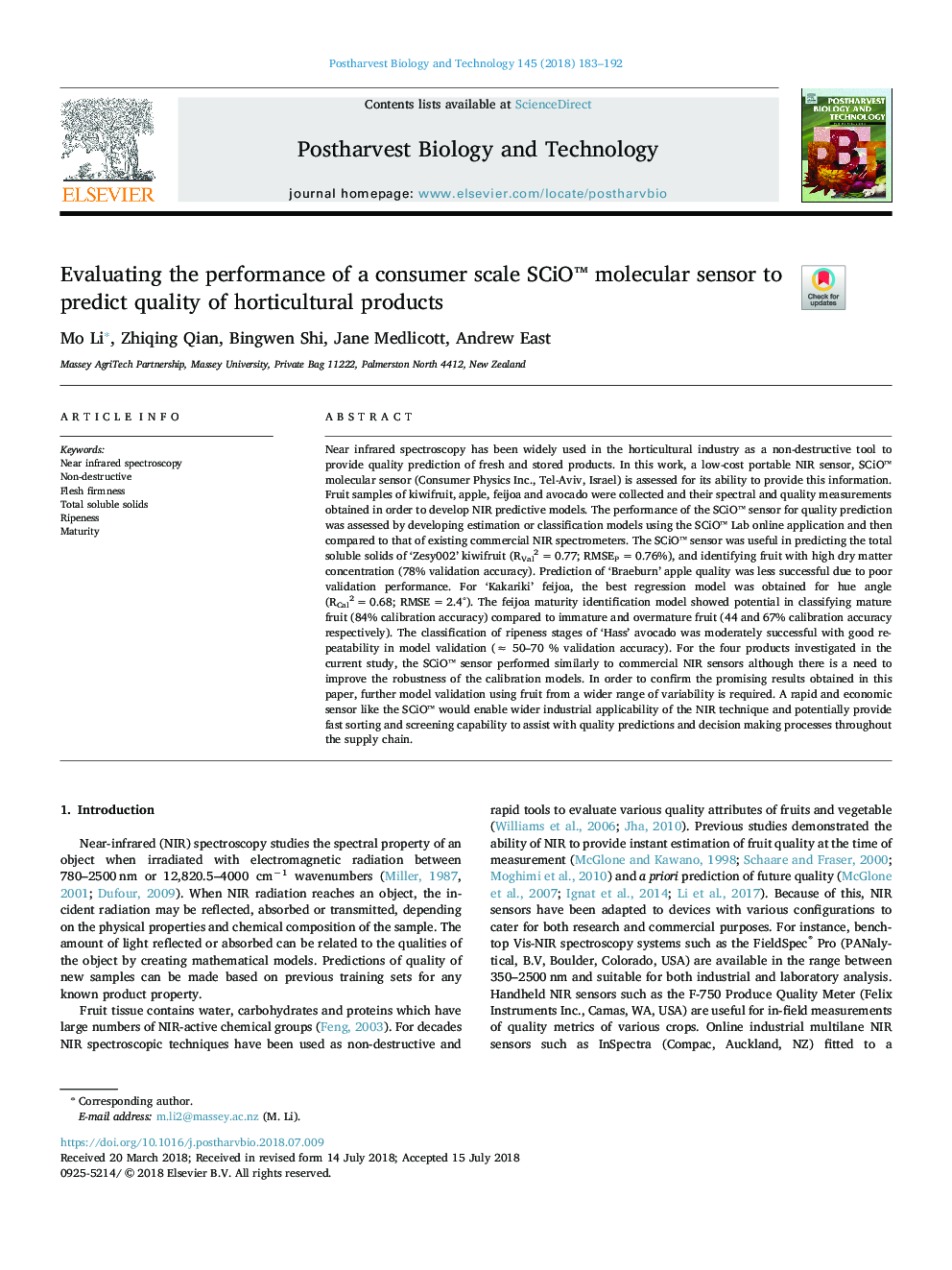| کد مقاله | کد نشریه | سال انتشار | مقاله انگلیسی | نسخه تمام متن |
|---|---|---|---|---|
| 8881801 | 1624949 | 2018 | 10 صفحه PDF | دانلود رایگان |
عنوان انگلیسی مقاله ISI
Evaluating the performance of a consumer scale SCiO⢠molecular sensor to predict quality of horticultural products
دانلود مقاله + سفارش ترجمه
دانلود مقاله ISI انگلیسی
رایگان برای ایرانیان
کلمات کلیدی
موضوعات مرتبط
علوم زیستی و بیوفناوری
علوم کشاورزی و بیولوژیک
علوم زراعت و اصلاح نباتات
پیش نمایش صفحه اول مقاله

چکیده انگلیسی
Near infrared spectroscopy has been widely used in the horticultural industry as a non-destructive tool to provide quality prediction of fresh and stored products. In this work, a low-cost portable NIR sensor, SCiO⢠molecular sensor (Consumer Physics Inc., Tel-Aviv, Israel) is assessed for its ability to provide this information. Fruit samples of kiwifruit, apple, feijoa and avocado were collected and their spectral and quality measurements obtained in order to develop NIR predictive models. The performance of the SCiO⢠sensor for quality prediction was assessed by developing estimation or classification models using the SCiO⢠Lab online application and then compared to that of existing commercial NIR spectrometers. The SCiO⢠sensor was useful in predicting the total soluble solids of 'Zesy002' kiwifruit (RVal2â=â0.77; RMSEPâ=â0.76%), and identifying fruit with high dry matter concentration (78% validation accuracy). Prediction of 'Braeburn' apple quality was less successful due to poor validation performance. For 'Kakariki' feijoa, the best regression model was obtained for hue angle (RCal2â=â0.68; RMSEâ=â2.4°). The feijoa maturity identification model showed potential in classifying mature fruit (84% calibration accuracy) compared to immature and overmature fruit (44 and 67% calibration accuracy respectively). The classification of ripeness stages of 'Hass' avocado was moderately successful with good repeatability in model validation (â 50-70 % validation accuracy). For the four products investigated in the current study, the SCiO⢠sensor performed similarly to commercial NIR sensors although there is a need to improve the robustness of the calibration models. In order to confirm the promising results obtained in this paper, further model validation using fruit from a wider range of variability is required. A rapid and economic sensor like the SCiO⢠would enable wider industrial applicability of the NIR technique and potentially provide fast sorting and screening capability to assist with quality predictions and decision making processes throughout the supply chain.
ناشر
Database: Elsevier - ScienceDirect (ساینس دایرکت)
Journal: Postharvest Biology and Technology - Volume 145, November 2018, Pages 183-192
Journal: Postharvest Biology and Technology - Volume 145, November 2018, Pages 183-192
نویسندگان
Mo Li, Zhiqing Qian, Bingwen Shi, Jane Medlicott, Andrew East,